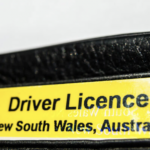Novel Cases: Passengers Who ‘Drink Drive’

Drink driving is the most prevalent offence in the NSW Local Courts, with over 20,000 drivers being charged in 2014.
The offence is usually committed by those who make the fateful mistake of driving home after a night of drinking, or when wrongly assuming they are under the limit the following day.
In other cases, full licence holders who are supervising learner drivers can be charged if they themselves are found to be over the limit.
But an interesting situation presents itself when a passenger takes control of the car while intoxicated – for instance, by leaning over and moving the steering wheel, or by pulling the handbrake while the vehicle is in motion.
In these very rare cases, can a passenger be charged with drink driving?
What Does the Law Say?
Drink driving is an offence under section 110 of the Road Transport Act 2013, which specifies penalties for those who, whilst having a ‘prescribes’ concentration of alcohol:
- Drive a motor vehicle, or
- Occupy the driving seat of a motor vehicle and attempt to put the motor vehicle in motion.
Obviously, the second category would not apply to passengers – so the question of whether or not a passenger can be charged with drink driving depends on the legal definition of ‘driving a motor vehicle.’
The Road Transport Act contains a glossary in section 4 – but this is where it becomes a little tricky.
Section 4 says that ‘driving’ a motor vehicle includes:
- Being in control of the steering, movement or propulsion of a vehicle;
- Drawing or towing a trailer; or
- Riding a vehicle (e.g. a motorcycle).
So, the question then becomes, ‘what constitutes being in control of the steering, movement or propulsion of a vehicle?’
Interesting Cases
On the face of it, it might seem ridiculous to assume that a drunk passenger who leans over and grabs the steering wheel could be ‘in control’ of the vehicle – surely, the control would remain with the person behind the wheel? But unfortunately, Australian cases have failed to confirm this interpretation.
For instance, in the ACT case of Mason v Dickason [2006] ACTSC 102, the defendant was a passenger in a car being driven by another. He applied the handbrake while the car was travelling, causing the car to slow down. The court held that the defendant was indeed ‘in control’ of the car for the very brief period during which he applied the brake.
But the later South Australian case of Harvey v Police (SA) [2009] confused matters. The facts of that cause where that Mr Harvey was sitting in the passenger seat of a car while his friend, the driver, went into a service station to pay for fuel. While waiting for his friend, Mr Harvey tried to activate the ignition to turn the radio on. Unfortunately, he accidentally turned the ignition all the way, and the car ‘lurched forward and rolled towards the service station.’ Mr Harvey unable to steer the car to safety and it crashed into the station’s store.
Mr Harvey was convicted of drink driving (as his blood alcohol reading was 0.25), driving whilst disqualified, driving an unregistered vehicle, and driving an uninsured vehicle – but he lodged an appeal in the Supreme Court, arguing that he had not been driving at the time of the incident.
The appeal judge, Justice White, found that while Mr Harvey ‘was exercising some control’ over the vehicle, he was not able to operate the clutch, footbrake, accelerator or other vehicle controls.
Furthermore, the engine had not started and the distance travelled was very short – being only about five metres. Based on these circumstances, Justice White held that Mr Harvey did not ‘drive’ the vehicle, and dismissed each of the charges against him.
Justice White’s judgment summarised the current state of the law as follows:
‘Although the word “drive” and its cognates are commonly used, the courts have not been able to develop a single test with which to determine whether a person was driving a vehicle.
Instead, courts have, depending upon the circumstances, had regard to a number of factors, including the extent of the control in fact exercised by the defendant over the movement of the vehicle; the extent of the defendant’s capacity to control the vehicle; the source of the vehicle’s propulsion; the position of the defendant in, or in relation to, the vehicle; the perceived legislative policy underlying the statutory provision in question, or a combination of some or all of those matters.’
Although both cases centred around the meaning of ‘control,’ a key difference was that Mr Harvey never intended to move the car, while the defendant in Mason v Dickason intentionally applied the handbrake.
The current state of the law therefore appears to be that the passenger’s intention is a relevant (but not decisive) factor when determining the question of ‘control’ – together with his or her physical actions.
Going to court for a traffic offence?
If you are going to court for a traffic offence, call or email Sydney Criminal Lawyers anytime to arrange a free first consultation with an experienced, specialist traffic lawyer who will accurately advise you of your options, the best way forward, and fight for the optimal outcome in your specific situation.






